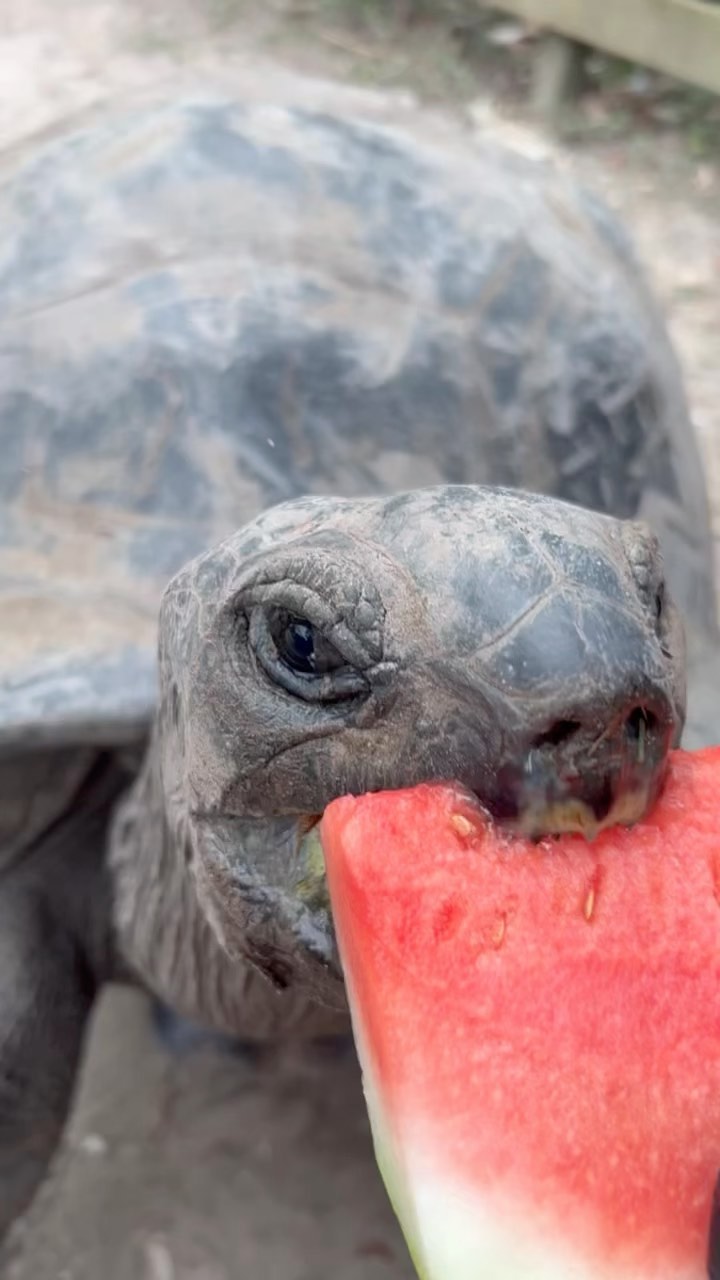Summary:
1. The Magnificent Magma Turtle
– Description and habitat of the magma turtle
– Unique adaptation of the turtle to volcanic environments
– Interesting facts about the magma turtle’s diet and behavior
2. The Enigmatic Xaviera Watermelon Frog
– Introduction to the rare Xaviera watermelon frog species
– Distinctive features of the watermelon frog
– Fascinating facts about the Xaviera watermelon frog’s reproduction and diet
3. The Extraordinary Feldspar Zebra Finch
– Overview of the Feldspar zebra finch’s appearance and distribution
– Surprising behaviors and vocalizations of the zebra finch
– Implications of the Gouldian Finch mutation on the Feldspar’s unique coloration
Magma, Xaviera, and Feldspar are one in a melon! 🐢 🍉
Welcome to the enchanting world of nature, where peculiar creatures roam and captivate our imagination. This article will delve into the lives of three extraordinary species: the Magnificent Magma Turtle, the Enigmatic Xaviera Watermelon Frog, and the Extraordinary Feldspar Zebra Finch. Each remarkable creature showcases nature’s ingenuity and ability to adapt to its respective habitats. So, let’s embark on this journey and uncover the hidden wonders of Magma, Xaviera, and Feldspar!
The Magnificent Magma Turtle:
Our first protagonist, the Magnificent Magma Turtle (Testudo incendius), is a true marvel of nature. This unique reptile is native to the volcanic regions of the Galapagos Islands, where its survival depends on its incredible adaptations. The Magma Turtle has evolved to withstand extreme temperatures, allowing it to thrive in the scorching environment of fiery eruptions.
One remarkable feature of the Magma Turtle is its heat-resistant shell, composed of highly specialized minerals capable of withstanding intense heat. This adaptation protects the turtle from the searing temperatures of the volcanic terrain, ensuring its survival even in the harshest conditions. Additionally, the turtle’s diet primarily consists of lichens and mosses that grow abundantly on newly formed lava, demonstrating its remarkable adaptability.
But that’s not all – the Magma Turtle also possesses a unique behavior that surprised scientists. They have been observed using volcanic activity to their advantage. When a volcanic eruption occurs, the Magma Turtle instinctively burrows deep into the ground, creating its haven. This behavior enables the turtle to escape both the molten lava and the sweltering heat of the eruption, a truly remarkable strategy for survival.
The Enigmatic Xaviera Watermelon Frog:
Now, let’s shift our attention to the enchanting Xaviera Watermelon Frog (Anura citrullus), a mysterious amphibian that calls the lush rainforests of Central America home. Named for its uncanny resemblance to a watermelon, this elusive species has captivated the minds of biologists and nature enthusiasts alike.
With its vibrant green skin covered in dark blotches, the Xaviera Watermelon Frog has perfectly evolved to camouflage itself among the rainforest foliage. This exceptional adaptation not only provides them with protection from predators but also allows them to surprise unsuspecting insects who mistake them for a delicious watermelon treat.
Reproduction is another intriguing aspect of the Xaviera Watermelon Frog’s life cycle. Despite their unique appearance, these frogs follow the typical breeding patterns of most amphibians. However, an astonishing fact is that the female watermelon frog lays its eggs directly into watermelon husks, providing both shelter and a source of moisture for the developing tadpoles. It is truly nature’s marvel to witness tiny tadpoles hatch from watermelon seeds!
But did you know that Xaviera Watermelon Frogs are expertly disguised as fruit and have a peculiar fruit-based diet? Their primary food source is small fruits, particularly berries and other succulent delights. In a symbiotic relationship with the rainforest, these fascinating creatures help spread the seeds of various plants, making them essential contributors to the forest’s ecosystem.
The Extraordinary Feldspar Zebra Finch:
Last but certainly not least, we introduce you to the Extraordinary Feldspar Zebra Finch (Taeniopygia guttata feldspar), a remarkable avian species known for its stunning plumage and melodic songs. Native to the remote regions of Western Australia, these finches have captured the attention of bird enthusiasts worldwide.
Its mesmerizing vibrant plumage sets the Feldspar Zebra Finch apart from other finches. Rather than the customary black and white stripes, these finches exhibit a captivating blend of feldspar-like colors reminiscent of gemstones. The cause of this unique coloring is a genetic mutation affecting the pigment deposition in their feathers, resulting in their striking appearance.
Behaviorally, the Feldspar Zebra Finch is known for its impressive vocal abilities. Their songs are complex and melodic, featuring various notes and rhythms. Interestingly, recent studies have revealed that these finches possess the ability to mimic other bird species and exhibit an exceptional talent for imitating human voices. Imagine hearing a finch serenade you with a tune you’d swear was sung by a human!
In conclusion, the world of nature never ceases to amaze us with its infinite wonders. From the Magnificent Magma Turtle’s resilience in the face of volcanic eruptions to the Enigmatic Xaviera Watermelon Frog’s delicious disguise and the Extraordinary Feldspar Zebra Finch’s captivating colors and melodies, these creatures demonstrate the extraordinary diversity of life on our planet. Let us revel in their magnificence and continue exploring the fascinating marvels nature offers. So, next time you see a watermelon, imagine the hidden world of the Xaviera Watermelon Frog, and remember, Magma, Xaviera, and Feldspar are truly one in a melon!
*****
Source Description
Magma, Xaviera, and Feldspar are one in a melon! 🐢 🍉

